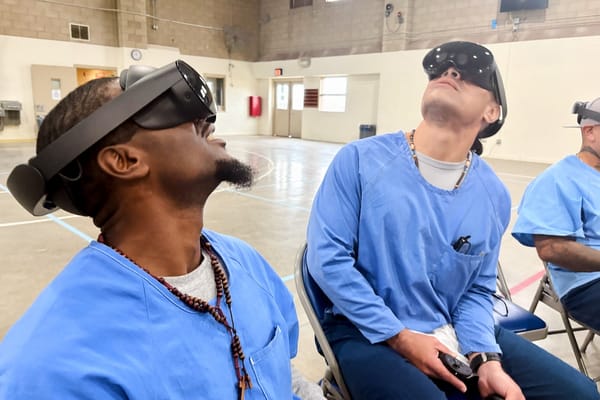Getting Started on an NTIA Broadband Stimulus Application
LAKE FOREST, Ill., August 10, 2009 – Here’s a step by step guide to completing an National Telecommunications and Information Administration application in a bid to receive money for broadband projects. The guts of the application will consist of one or two page narratives in the following areas: pr
Don Samuelson
Editor’s Note: The following guest commentary appears by special invitation of BroadbandCensus.com. BroadbandCensus.com does not necessary endorse the views in the commentary, but invites officials, experts and individuals interested in the state of broadband to offer commentaries of their own. To offer a commentary, please e-mail commentary@broadbandcensus.com. Not all commentaries may be published.
The staff of BroadbandCensus.com has produced a four-page report on the essentials of the Broadband Initiative Program-Broadband Technology Opportunities Program Notice of Funds Availability, which is available for purchase for $25.00, at http://broadbandcensus.com/special-reports.
By Don Samuelson, Guest Commentary, BroadbandCensus.com
LAKE FOREST, Ill., August 10, 2009 – Here’s a step by step guide to completing an National Telecommunications and Information Administration application in a bid to receive money for broadband projects.
The deadline for the first round of NTIA broadband submissions is August 14. The first step is going to Broadband USA and clicking on the application link: http://broadbandusa.sc.egov.usda.gov/download_app.htm
You’ll find 47 topics, many of them essentially administrative. However, the guts of the application will consist of one or two page narratives in the following areas:
- Project Proposal: Problem, Solution and Outcomes
- Project Benefits and Innovation: New Subscribers/Cost Per Subscriber
- Awareness Campaign: Identifying and Capturing the Market
- Impact Evaluation: What Real Differences Have Been Made
- Technical Strategy and Organizational Capacity
- Project Timeline and Challenges
- The Budget and Budget Narrative
The evaluation scoring will be: Project Purpose (30%), Project Benefits (25%), Project Viability (25%) and Project Budget and Sustainability (20%). The purpose of this short paper is to help Public Housing Authorities get started in thinking how they might develop a winning proposal that advances overall agency objectives.
Project Purpose
NTIA’s objective in providing adoption grants is to move vulnerable populations across the digital divide, to create new – and permanent – users of the Internet. The assumption is that once public and Housing and Urban Development housing families and seniors experience the benefits of broadband and the Internet they will be motivated to be self-sufficient and shoulder more of the burden of their own well-being. Costs can be reduced. Access to services can be increased. The overall quality of life will be improved.
An applicant will have to paint a “before” and “after” scenario. Here is a description of the current status of computers, Internet access and use/adoption in the individual units. The assumption is that the percentages will be very low. Here is the intervention strategy to promote greater interest and use. These are the projections of use adoption and use at the end of the intervention. The percentages should be high. This data can be collected by surveys and performance updates.
But a key word is “sustainable.” The use and adoption must continue. Equally important, the use has to be paid for. The major problem with the Housing and Urban Development Neighborhood Networks program was that while more than a thousand computer training centers were created under the program, there was no permanent funding to pay for program needs: instruction, maintenance, broadband connectivity and software and hardware upgrades.
It would be smart to think of this new program in terms of teaching residents to fish rather than being a permanent source of fish. The use by seniors of the CTC in the building should be an initial step on the path to a permanent life on the Internet. In two years the CTC can be shut down, all of the seniors will have computers and Internet in their units and a sustainable adoption will have been achieved.
Innovation
The innovation in the proposal is in using the on-site CTC as a collection point and launching pad, not as a permanent function. It may well be that new applications and group discussions can take place in the CTC. But the residents will have crossed the digital divide and the collaborations and life-long learning efforts of the future can take place in the individual units and not in the CTC.
The future I’ve postulated will need computers and Internet connections for all residents, not just for the limited number of devices in the CTC, connected by a wireless Local Area Network. Where will they come from? Ideally, the computers in the units should be refurbished computers and “thin clients.” The advantage of thin clients (or refurbished computers converted to think clients) is that they are inexpensive to buy and inexpensive to maintain. There are not many things to go wrong. It can be a “plug and play” device. Donated and refurbished computers can count as the local “match” at NTIA. The NTIA grant can fully subsidize Internet connections for a year, and at a 50 percent rate the second year. The initial computers/thin clients can be paid for by NTIA. The “sustainability” can be achieved by having residents fully pay for their Internet connection in year three along with upgrades, new computers and peripherals. The goal of the program is not to support on-site CTCs. The goal of the program is to use on-site CTCs for marketing the benefits of broadband and the Internet, and to prompt residents to cross the digital divide.
The Awareness Campaign
A short one-page survey should be the first step in the awareness campaign. The survey should be oriented to current conditions (computer, dial-up or broadband Internet access, etc.), the current interests of the residents and their thoughts on how they intend to use broadband access. The results of the survey will inform the basis for small focus-group meetings, to identify local Internet advocates/leaders and to build an outreach corps. Inviting residents to illustrate their Internet activities on an electronic white board before larger groups of residents could demonstrate practical uses by peers. It would be helpful to send e-mail to the children, grandchildren and friends of the residents to explain the Internet adoption program and to request support. Once relevant content is developed and accessible over the Internet, a Web site can be developed to promote communications and collaborations among residents, and can provide access to the program to seniors on the building waiting list, and neighborhood seniors.
Impact Evaluation
Progress can be tracked throughout the entire two year program. The survey will provide the base-line information. Periodic interim reports can be generated related to: (1) filling out the survey; (2) participation in focus groups; (3) attendance at training sessions; and (4) the successful completion of training modules — not unlike the various progressions in Cub Scouts and Boy Scouts. But thc key measurements will relate to the acquisition and use of a free computer and Internet access in the unit. Even more important will be the percentage of residents who will pay for Internet connectivity after the subsidy period is ended and the residents who will pay themselves for connectivity, hardware upgrades and software. Other important measurements will relate to the uses made of the Internet connection and the amount of time spent on the Internet.
Technical Strategy
The on-site CTC should function like a 21st century classroom, with desktop terminals, a teacher’s station, an electronic whiteboard, a broadband connection and electronic curricula. The CTC should have a color printer and other peripherals essential to the educational/training functions of the CTC. It would be helpful to have webcasting capability in the CTC so that instructional programs. panel discussions and illustrations of resident work could be “broadcast” throughout the building creating virtual meetings for all of the building residents. The all-building virtual meeting developed for Internet/computer training purposes can be used for many other uses as well.
How do we find affordable computers or thin clients for all of the building residents? First, the free refurnished computers or thin clients are “awarded” to residents who complete successfully a training course in the CTC. So they are rolled out over a period of time. Second, there is a ready pool of discarded computers everywhere in the United States – at least for the time being – resulting from the upgrading of personal computers in corporations, law and accounting firms and government. The refurbishing process is relatively simple, easily done by middle and high-school students with little oversight.
The question remains how the broadband connectivity is distributed throughout the building – normally by a combination of hardwiring to the heavy Internet users (management office, CTC, maintenance office, etc.) on the main floor and wireless distributions throughout the building. This solution will have to be developed out of the specific circumstances of each location and the overall needs of the adoption program.
Project Timeline
Assuming that grant is awarded on October 1 and all of the detailed planning is done after you have survived the first cut, the first step will be surveys, focus groups and the “pre-selling” of the program. The second step will involve the preparation of the training curriculum, the program website and the recruitment of the site director. A good start on this can be done before the actual award is made. The whole system should be operational by the holidays and the first two four-week training program should have been completed. The whole program can be completed in 2010. The whole program is three months of planning, three months of start-up and a year of operation.
Project Challenges
The biggest challenge will be to plan and implement the outreach in terms of generating benefits that are practical value to seniors, and to gently overcome the natural resistance to try something new. This will have to be a fun learning experience, not unlike races for little kids, where everyone can feel good about their progress because it is advancing them along a path they have concluded will have value. The second challenge will be to find a program manager/instructor who has the collection of diverse training skills that can make this program happen. The third challenge is to find a local source of refurbished computers that can fit the PC or thin client needs of the program in sufficient numbers to provide a computer for every resident. The fourth challenge is to identify affordable broadband connections for the residents. The fifth challenge is to find, review and arrange for on-line curricula that is responsive to the interests of residents that can provide a core “package” of applications that meet the interests and needs of seniors.
The Budget and Budget Narrative – Program Eligible and Matching Costs
There are certain eligible program costs that can be paid for by the NTIA grant. In general, they related to computers, furniture, equipment, training, connectivity and maintenance. They are costs directly related to the development of the adoption program. The cost of space would normally not be covered unless it was to be devoted exclusively to the function of the CTC. Once a cost has been determined to be “eligible,” 80 percent of the program costs can be paid for by the NTIA grant, and 20 percent needs to be covered by separate matching funds. The Budget Narrative needs to document and explain each cost element with respect to hourly rates, unit costs, projected quantities and the reasonableness of the projected cost. The budget needs to tie in to the overall program.
Donald S. Samuelson has more than 30 years of experience in government-assisted housing and real estate development. He has a passion for applying broadband to provide solutions in the fields of education and training. E-mail him at DSSA310@aol.com, or contact him by phone at 847-420-1732.










Member discussion